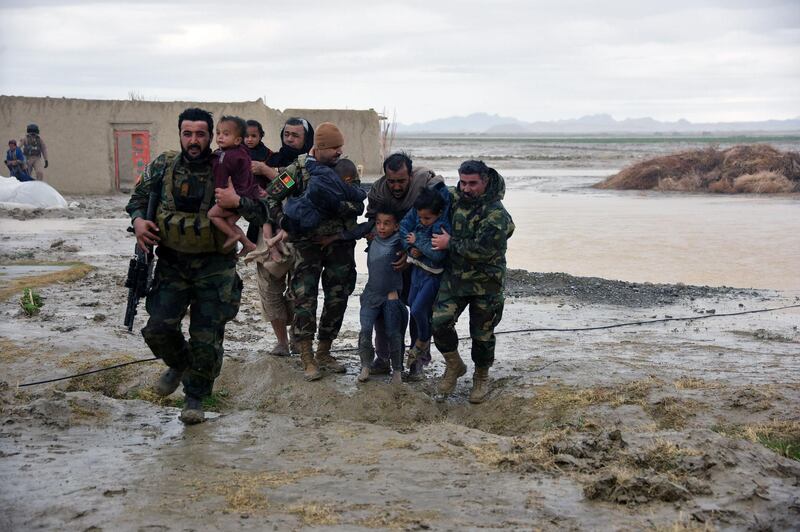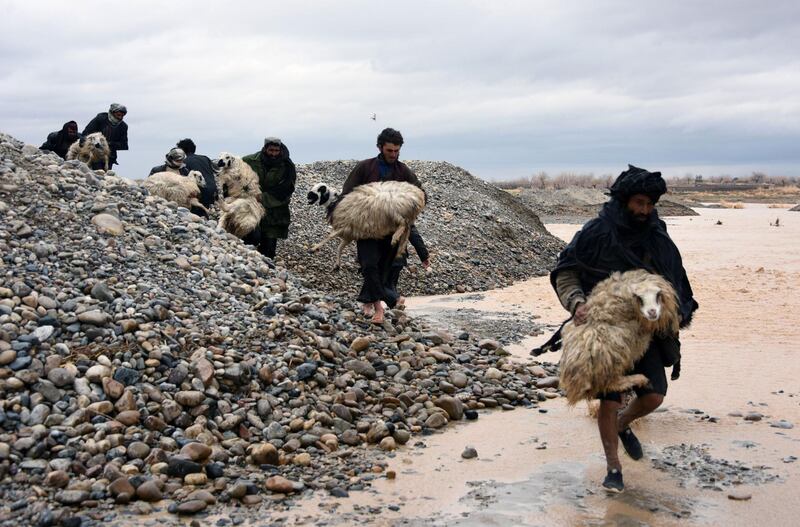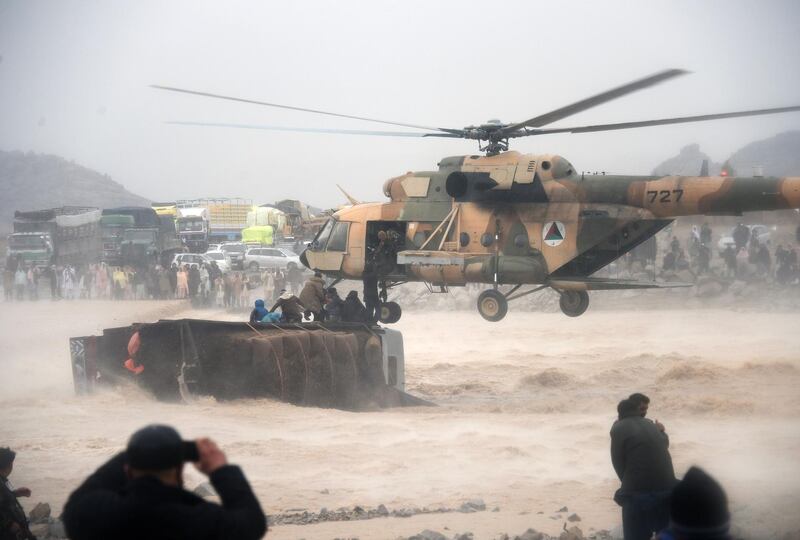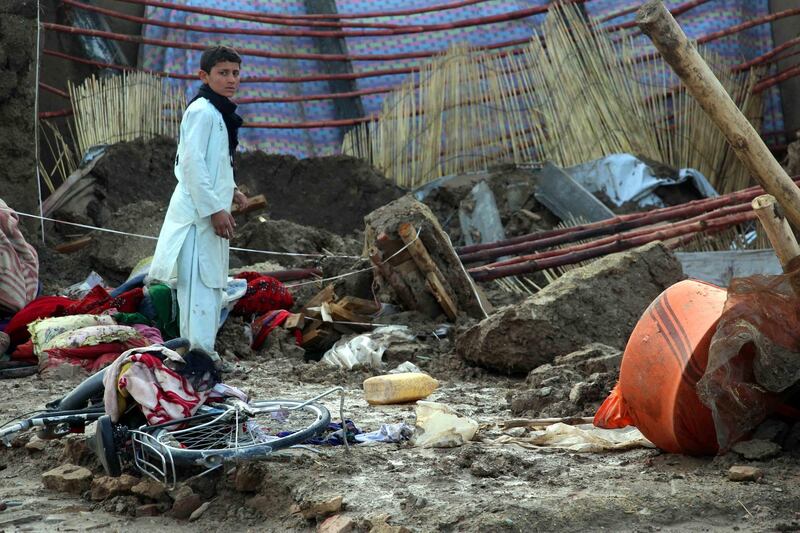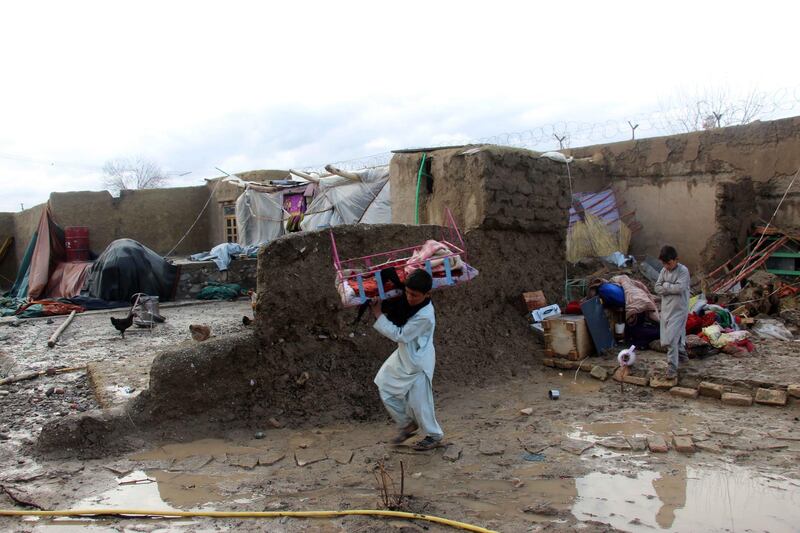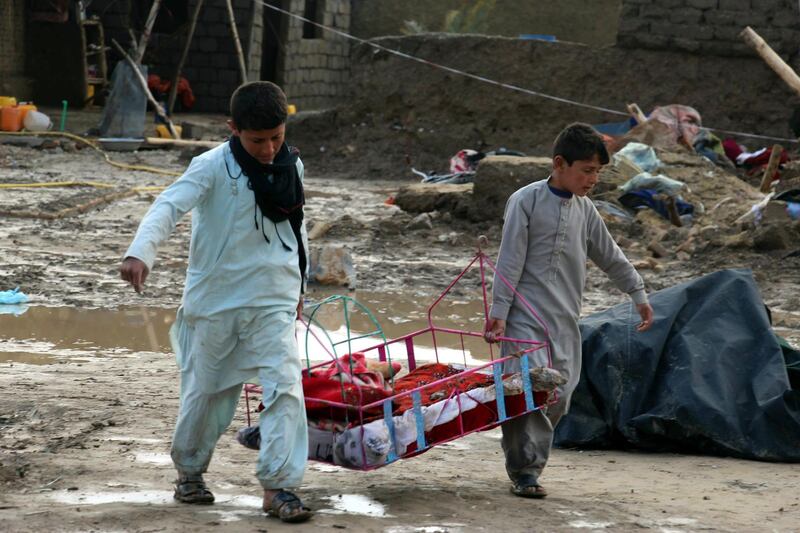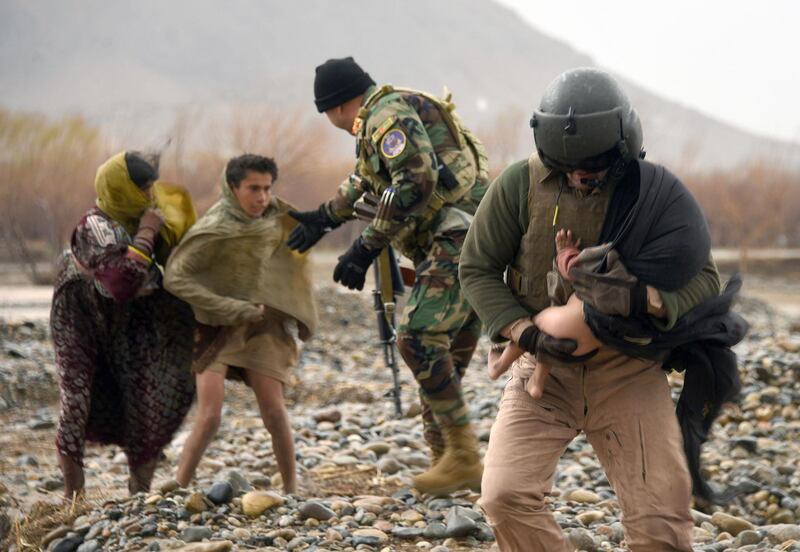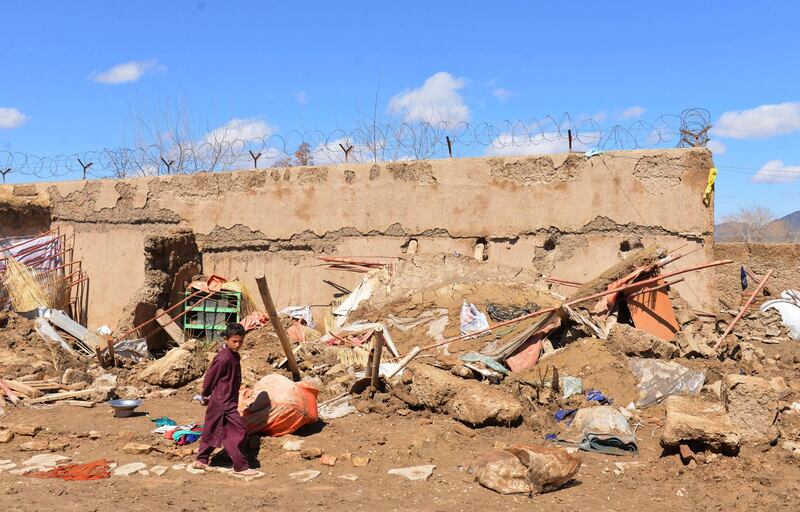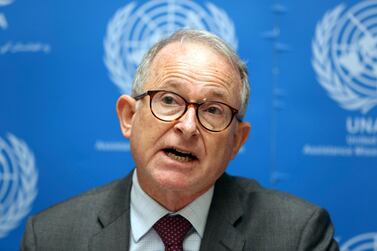Heavy rains in the southern Afghan province of Kandahar triggered flash floods that killed more than 20 people.
The UN reported that the dead included children whose homes collapsed or who were swept away. Ten people were reported missing.
Kandahar city, as well as districts including Zheri, Dand, Damand, Arghandab, Spinboldak and Takhtapu were hit by the floodwaters.
Yesterday the UN said floods had also affected Zabul, Herat, Kunar and Farah provinces, with 85 per cent of Farah’s capital left submerged and with 500 families displaced. Unconfirmed reports suggest that eight people were killed.
Most roads were closed and telecoms were cut, making it difficult to reach people. Local authorities and private construction companies worked to remove debris and reopen roads.
The UN estimates that in Kandahar city alone about 600 houses were damaged or destroyed, while Afghan government officials said that 379 families in the city were affected and 1,575 homes in the adjacent districts were destroyed.
Omar, 40, and his family were among those displaced by the floods and seeking refuge in Kandahar city. "Since people in our village mostly care for livestock, we are settled close to the river and mountains," Mr Omar told The National.
“As a result, even a little more than average rainfall affects us, and this time it was very destructive.”
Mr Omar and his family were forced to flee their home when the walls of their house began to cave in under the flooding.
“When the flood came it took over at least 25 to 30 other houses and even a school,” he said. “All the walls of our house and the main door are gone. We were rescued by Afghan forces who lifted us to safety from where we walked to the capital city.”
The Provincial Disaster Management Committee held a meeting on Saturday in the Kandahar governor’s compound, and five rapid assessment teams, including international aid organisations, were formed and sent to all flooded areas within the province.
Government officials said the country’s security forces rescued about 200 residents by yesterday morning. Images circulated on social media show attempts by Afghan troops to rescue survivors who had sought refuge on higher ground.
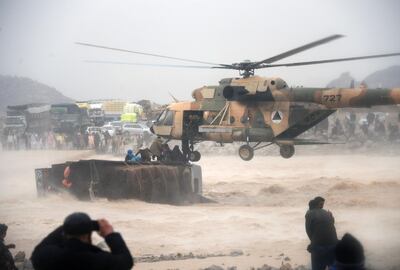
Families are being moved to safe areas and sheltered in schools, mosques and government buildings.
But not everyone was saved from the rising water. About 500 Kochi nomads were stranded on the banks of the Arghandab river that flows through Kandahar.
About 97 millimetres of rain fell on the affected areas over three days – the most the country has seen in seven years.
The average rainfall in Kandahar, which is generally hot and dry, is about 176mm a year. Heavy snowfall across the country this winter cut off many areas and raised fears of severe flooding in the spring.
So far this year, nearly 50 people have died in Afghan floods.
“A lot of people have suffered from the floods in our village. They lost houses, mosques and schools have been damaged and there are a lot of financial losses,” Mr Omar said.
“We lost everything in our house: all property, blankets, rugs and pretty much everything we owned. Our kids are sick and we need medical aid.”
